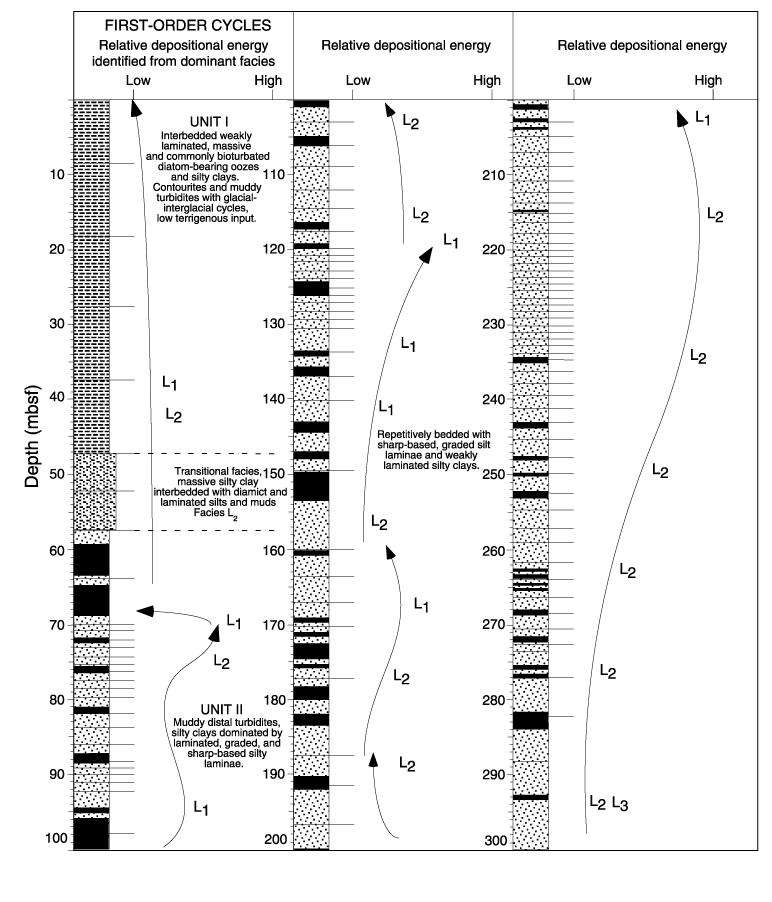Figure F2. Schematic lithostratigraphy of Site 1095 showing lithologic Units I and II, main bioturbated intervals (black), and distribution of laminated (mainly turbidite) Facies L1, L2, and L3. Horizontal lines indicate occurrence of silt laminae, which can form as much as 10% of the section (e.g., 70-80 and 220-235 mbsf). Curved arrows show broad trends in frequency of sand and silt laminations and facies types, which are attributed to long-term "first-order" cycles in Unit II. Shorter-term, "second-order" cycles, interpreted as glacial-interglacial cycles, are defined top and bottom by intensely bioturbated intervals. These climatically driven cycles are superimposed on the long-term cycles.

![]()